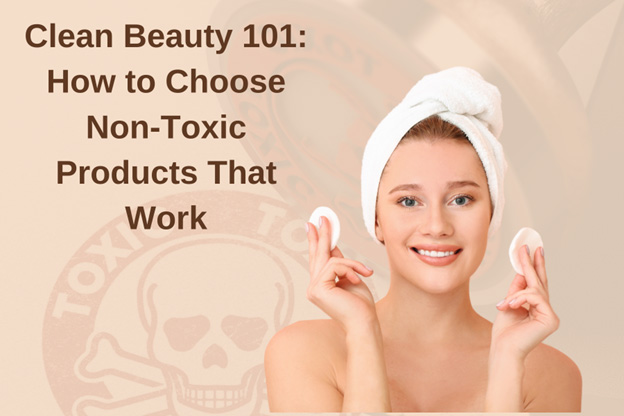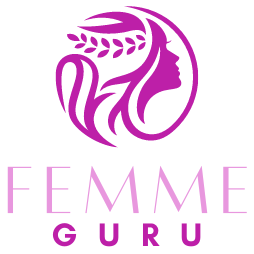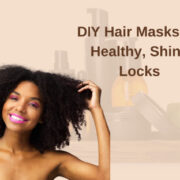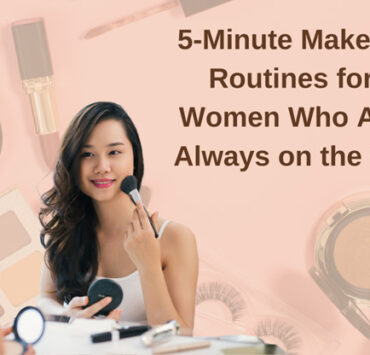Clean Beauty 101: How to Choose Non-Toxic Products That Work

Walk into any beauty store today and you’ll see labels like “clean,” “non-toxic,” “green,” and “natural” plastered across shelves. But what do those words really mean? And more importantly—do those products actually work?
As more women become conscious of what they’re putting on their skin, the clean beauty movement has exploded. But with so many buzzwords and marketing tricks, choosing truly non-toxic beauty products can feel overwhelming.
This beginner-friendly guide will help you cut through the noise, understand what “clean beauty” really means, and learn how to build a routine with safe, effective products you can trust.
What Is Clean Beauty, Really?
Clean beauty refers to products that are made without ingredients known or suspected to be harmful to your health. Unlike terms like “organic” or “natural,” “clean” isn’t regulated by the FDA—so brands can use it however they like.
That’s why it’s important to go beyond the label and understand what to look for.
Clean Beauty Means:
- Safe for human health
- Non-toxic and free from harmful chemicals
- Transparent about ingredient sourcing
- Often (but not always) eco-conscious and cruelty-free
Clean beauty doesn’t have to be all-natural—it just has to be safe.
Why Should You Care About Non-Toxic Beauty?
Your skin is your body’s largest organ, and what you put on it matters. Studies have shown that certain beauty ingredients can disrupt hormones, trigger allergies, and even increase long-term health risks.
Common offenders found in traditional beauty products include:
- Parabens (preservatives linked to hormone disruption)
- Phthalates (found in fragrances and linked to reproductive issues)
- Formaldehyde-releasing agents
- Sulfates (harsh cleansers that can irritate skin)
- Synthetic fragrance (a major cause of skin sensitivity)
Switching to non-toxic products can reduce your body’s toxic load and support overall health—while still helping you look and feel beautiful.
How to Read a Beauty Label Like a Pro
Don’t let the fancy packaging fool you. Learning how to decode a label is your best defense against greenwashing.
Look for:
✅ Ingredient transparency
✅ Fewer synthetic chemicals
✅ Certifications like EWG Verified, Made Safe, or USDA Organic
✅ Fragrance-free or naturally scented
Watch out for:
🚫 Fragrance/parfum (this can hide dozens of unlisted chemicals)
🚫 Long, unrecognizable ingredient lists
🚫 Vague terms like “natural” or “eco” with no explanation
Tip: Use tools like the EWG Skin Deep Database or the Think Dirty app to scan and rate products before you buy.
Top Ingredients to Embrace in Clean Beauty
Here are some skin-loving, non-toxic ingredients to look for:
- Hyaluronic acid – Hydrates and plumps
- Niacinamide – Balances skin tone and reduces inflammation
- Vitamin C – Brightens and protects
- Plant-based oils (jojoba, rosehip, squalane) – Nourish and strengthen
- Aloe vera – Soothes and heals
- Green tea extract – Antioxidant and anti-inflammatory
Clean products can still pack a punch when it comes to performance—you just need the right ingredients.
How to Transition to Clean Beauty (Without Stress)
You don’t need to toss out your entire routine overnight. Start small and strategic.
Try this plan:
- Identify the “dirty dozen” in your current routine (products you use daily or on large areas, like lotion, foundation, body wash).
- Replace one product at a time with a cleaner alternative.
- Patch test every new product to avoid irritation.
- Listen to your skin—just because it’s clean doesn’t mean it’s right for you.
Trusted Clean Beauty Brands to Explore
Here are a few brands known for clean ingredients and effective products:
- Beautycounter – Rigorous safety standards and transparent formulations
- Ilia Beauty – Clean makeup that performs like prestige brands
- True Botanicals – Plant-powered skincare with clinical results
- Herbivore Botanicals – Minimalist and sensorial skincare
- 100% Pure – Fruit-pigmented makeup and natural skincare
- The Ordinary – Affordable, transparent formulas with clean actives
Always read labels—brands can vary across product lines.
Final Thoughts: Clean Beauty Is About Empowerment
Clean beauty isn’t about perfection—it’s about awareness, choice, and self-care. When you choose non-toxic products, you’re not just nourishing your skin—you’re taking control of your health and wellness from the outside in.
💬 Your Challenge:
Audit your current skincare or makeup bag. Choose one product to replace with a clean alternative this week. Track how your skin feels, and celebrate the step you’ve taken toward safer beauty.




